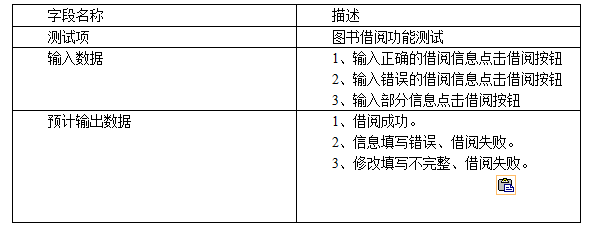说明:在一些场景,如导入数据,批量插入数据库,使用常规方法,需要等待较长时间,而使用线程池可以提高效率。本文介绍如何在Spring Boot中使用线程池来批量插入数据。
搭建环境
首先,创建一个Spring Boot项目,pom文件如下:
<?xml version="1.0" encoding="UTF-8"?>
<project xmlns="http://maven.apache.org/POM/4.0.0"xmlns:xsi="http://www.w3.org/2001/XMLSchema-instance"xsi:schemaLocation="http://maven.apache.org/POM/4.0.0 http://maven.apache.org/xsd/maven-4.0.0.xsd"><modelVersion>4.0.0</modelVersion><parent><groupId>org.springframework.boot</groupId><artifactId>spring-boot-starter-parent</artifactId><version>2.7.12</version><relativePath/></parent><groupId>com.hezy</groupId><artifactId>thread_pool_demo</artifactId><version>1.0-SNAPSHOT</version><properties><maven.compiler.source>11</maven.compiler.source><maven.compiler.target>11</maven.compiler.target><project.build.sourceEncoding>UTF-8</project.build.sourceEncoding></properties><dependencies><dependency><groupId>org.springframework.boot</groupId><artifactId>spring-boot-starter-web</artifactId></dependency><dependency><groupId>org.projectlombok</groupId><artifactId>lombok</artifactId></dependency><dependency><groupId>com.alibaba</groupId><artifactId>druid-spring-boot-starter</artifactId><version>1.2.8</version></dependency><dependency><groupId>com.mysql</groupId><artifactId>mysql-connector-j</artifactId><scope>runtime</scope></dependency><dependency><groupId>org.mybatis.spring.boot</groupId><artifactId>mybatis-spring-boot-starter</artifactId><version>2.2.2</version></dependency><dependency><groupId>org.springframework.boot</groupId><artifactId>spring-boot-starter-test</artifactId><scope>test</scope></dependency><dependency><groupId>cn.hutool</groupId><artifactId>hutool-all</artifactId><version>5.8.6</version></dependency></dependencies>
</project>
写一个插入数据的Mapper方法
java">import com.hezy.pojo.User;
import org.apache.ibatis.annotations.Insert;
import org.apache.ibatis.annotations.Mapper;
import org.apache.ibatis.annotations.Param;@Mapper
public interface UserMapper {@Insert("insert into i_users (username, password) values (#{user.username}, #{user.password})")void insert(@Param("user") User user);
}
写一个接口,用来插入20万条记录,如下:
java">import com.hezy.pojo.User;
import com.hezy.service.AsyncService;
import com.hezy.service.UserService;
import org.springframework.beans.factory.annotation.Autowired;
import org.springframework.web.bind.annotation.GetMapping;
import org.springframework.web.bind.annotation.RequestMapping;
import org.springframework.web.bind.annotation.RestController;import java.util.ArrayList;@RestController
@RequestMapping("user")
public class UserController {/*** 总记录数*/private final static int SIZE = 40 * 10000;@Autowiredprivate UserService userService;@Autowiredprivate AsyncService asyncService;@GetMapping("insert1")public void insert1() {ArrayList<User> list = new ArrayList<>(SIZE);for (int i = 0; i < SIZE; i++) {User user = new User();user.setUsername("user" + i);user.setPassword("password" + i);list.add(user);}long startTime = System.currentTimeMillis();// 批量插入for (User user : list) {userService.insert(user);}long endTime = System.currentTimeMillis();System.out.println("不用线程池===插入40万条记录耗时:" + ((endTime - startTime) / 1000) + "s");}
}
启动项目,测试一下,看要多长时间……11分钟

使用线程池
Spring Boot有自动注入的线程池(threadPoolTaskExecutor),可以手动设置一些属性,为我们所用。
java">import org.springframework.context.annotation.Bean;
import org.springframework.context.annotation.Configuration;
import org.springframework.scheduling.annotation.EnableAsync;
import org.springframework.scheduling.concurrent.ThreadPoolTaskExecutor;import java.util.concurrent.Executor;
import java.util.concurrent.ThreadPoolExecutor;@Configuration
@EnableAsync
public class ThreadPoolConfig {@Bean(name = "threadPoolTaskExecutor")public Executor threadPoolTaskExecutor() {ThreadPoolTaskExecutor executor = new ThreadPoolTaskExecutor();executor.setCorePoolSize(20);executor.setMaxPoolSize(40);executor.setQueueCapacity(500);executor.setKeepAliveSeconds(60);executor.setThreadNamePrefix("hezy-");executor.setRejectedExecutionHandler(new ThreadPoolExecutor.CallerRunsPolicy());executor.initialize();return executor;}
}
使用线程池来完成上面插入数据的操作,如下:
java"> @GetMapping("insert2")public void insert2() {ArrayList<User> list = new ArrayList<>(SIZE);for (int i = 0; i < SIZE; i++) {User user = new User();user.setUsername("user" + i);user.setPassword("password" + i);list.add(user);}// 将数据分成4000批,每批插入100条List<List<User>> batchList = new ArrayList<>();for (int i = 0; i < list.size(); i += 100) {batchList.add(list.subList(i, i + 100));}long startTime = System.currentTimeMillis();CountDownLatch countDownLatch = new CountDownLatch(batchList.size());// 线程池分批插入for (List<User> batch : batchList) {asyncService.executeAsync(batch, userService, countDownLatch);}try {countDownLatch.await();} catch (InterruptedException e) {throw new RuntimeException(e);}long endTime = System.currentTimeMillis();System.out.println("使用线程池===插入40万条记录耗时:" + ((endTime - startTime) / 1000) + "s");}
AsyncService实现类
java">import com.hezy.pojo.User;
import com.hezy.service.AsyncService;
import com.hezy.service.UserService;
import org.springframework.scheduling.annotation.Async;
import org.springframework.stereotype.Service;import java.util.List;
import java.util.concurrent.CountDownLatch;@Service
public class AsyncServiceImpl implements AsyncService {@Async("threadPoolTaskExecutor")@Overridepublic void executeAsync(List<User> batch, UserService userService, CountDownLatch countDownLatch) {try {for (User user : batch) {userService.insert(user);}} finally {countDownLatch.countDown();}}
}
启动,测试,速度提升很明显。如果再改造一下insert()方法,一次插入多条数据,肯定还能更快。

总结
本文介绍如何使用Spring Boot装配的线程池Bean,完成大数据量的批量插入操作,提高程序执行效率。
实例完整代码:https://github.com/HeZhongYing/thread_pool_demo
参考B站UP主(孟哥说Java)视频:https://www.bilibili.com/video/BV18r421F7CQ





![[大语言模型-算法优化] 微调技术-LoRA算法原理及优化应用详解](https://i-blog.csdnimg.cn/direct/7d81fb702c5b42b4a9adc2a8a6bee102.png)
